I never thought of myself as a procrastinator, until recently, that is. Reflecting on several “difficult” tasks, I realized that I was putting them off, to my own detriment. So last month, I decided to begin with one so-called “hard stuff” items and meet it head-on.
In my case, the hard stuff has to do with self-care. I spend a lot of time addressing the needs of my family, not to mention completing volunteer work for several local seniors’ organizations. What I don’t do is address my needs first—you know, put on my own oxygen mask before helping others’ with theirs. Although I have written about this exact topic on several occasions, I wasn’t practising what I was preaching. What did I need to address in terms of self-care? The biggest issue for me was my ballooning weight gain. Part denial, part resignation to my aging body, I believed things were beyond my control. I don’t drink, I cook from scratch, and I’m very physically active (including the recommended 2 strength training sessions per week), so it must just be the vagaries of a post-menopausal body was my thinking. It was time to do the hard stuff, including but not limited to:
While some of you may think this list is feeble and/or not that difficult, I say to you, hard stuff is entirely subjective. This is my hard stuff and it’s been the focus of the past month. And trust me, it feels really hard. In fact, I think the hardest part of all is telling you that I’m on a weight-loss journey. In some ways, it feels like defeat that I need to do this in the first place. As I head towards my second month, I can happily report that the number on the scale is heading in the right direction. And while I still find many of these tasks difficult to do, I also feel a sense of empowerment as I take control of my health and focus on me first. In my case, doing the hard stuff first is a positive step that has helped me move beyond procrastination. For now, at least.
0 Comments
The Canadian Medical Association (CMA) and the National Institute on Ageing reported recently that 96% of Canadians want to age in place. They want to stay in their own homes as long as possible and stay independent at the same time.
It may be something you or your loved ones are contemplating in the golden years. It’s a hot topic in our household, as the grandparents on both sides of the family continue to appreciate aging in place. An often overlooked aspect of aging in place is the importance of preventing a life-altering fall. As we age, our risk of falling increases, along with the likelihood that a fall will cause an injury. In fact, falls are the leading cause of injury among older Canadians, with 20 to 30 per cent of seniors experiencing one or more falls each year. Half of all falls happen in the home—the very place older adults spend most of their time. Since 2019, I have published six books geared to supporting seniors with fall prevention. My goals with these books are to help seniors:
Sometimes, though, seniors don’t want to hear about or discuss fall prevention. I’ve seen this firsthand at recent book signings. A senior will slow down to see the books on my display table. As soon as they register the topic, they’ll beat a hasty retreat. Some of them will shake their heads and tell me they don’t need fall prevention help. But the fact is a fall can happen at any time. And there are many factors that contribute to the risk of a fall:
If aging in place is on your radar, I hope this article will provide some practical tips to stay independent as long as possible. And while I regularly tout the benefits of regular physical activity to prevent falls, the non-exercise fall prevention tips are just as important as the exercise tips. They include:
And if you need help with the exercise side of fall prevention, please feel free to reach out. I can recommend one of my six publications, based on your requirements. Or you can find out more information in the books section. In closing, please indulge me while I share my favourite movement-based catchphrases and quotes:
There are many misconceptions about the concepts of introversion and extroversion, and I’m not here to school you on personality traits. There’s always Google and ChatGPT if you want to delve into it in more detail.
In a nutshell, I see myself as an introvert because I prefer to recharge my battery in private. If I don’t get a good dose of “cave time” every day, it impacts my ability to interact with others. Think babbling idiot who frequently inserts both feet in mouth, peppered with blank stares when engaged in conversation. Take your pick—my brain usually decides independently which option it will show the world when I’m spent: either my brain is in overdrive and can’t cope, or it shuts down completely (because it can’t cope). Since I’ve been introverting more and more these days, I’ve also been replaying in my head some of my not-so-stellar excursions as an extrovert. Like networking. For an introvert, networking can cause heart palpitations, sweaty palms, and a strong desire to flee. No fight-or-flight for this introvert—it’s flight all the time. At a time in my working life when networking was mandatory (downsizing meant I was switching careers), I sought advice from a business coach. “How do I handle networking events when all I want to do is run and hide?” “When you walk in a room, find the person standing alone and go talk to them. They’re probably feeling the same way.” That sounded much less overwhelming than walking up to a group of strangers, and it was something I could possibly attempt without passing out from overwhelm. His parting words stuck with me. “It works in social situations too.” I decided to put my newfound knowledge to the test when I was invited to a party. I knew the party hosts, but wasn’t sure I’d known anyone else there. I couldn’t rely on shadowing the hosts all evening, as they would be busy with hosting duties. When I arrived, several groups of strangers nearly scared me back to my cave. They seemed to know each other quite well, sharing inside jokes and family updates. I wandered around the spacious home, looking for someone I knew or, better yet, someone standing alone. My search led me to the kitchen, where a woman was standing near the sink, a few feet away from a group of partygoers. Here was my chance to practise my networking skills and hopefully make a new acquaintance. Try as I might, this woman resisted my attempts at conversation. Was I that bad at small talk?! I skulked out of the kitchen and hovered awkwardly on the outskirts of another group, nursing my bruised ego. A few moments later, I saw the object of my failed networking attempt emerge from the kitchen carrying a tray of hors d’oeuvres. She was hired to work the party, not interact with socially-awkward guests like me. I was equal parts relieved and mortified. It wasn’t me! I still beat a hasty retreat back to my cave. Feel free to laugh about my mishap. I laugh about it all the time, now that some time has passed.  As we age, we tend to slow down. Our muscles shrink, our vision blurs, and our reaction time diminishes. Together, all of these factors lead to an increased risk of falling. We can work on muscle strength to help avoid a fall. But sometimes, we need to take a break from standing up. During these sitting periods, chair exercises can help you strengthen your muscles and increase your confidence when you do have to stand up and move around. When you do chair exercises daily, you reduce the risk of falls. The movements increase blood flow and keep your joints active and lubricated. Chair exercises come in handy when you have limited mobility or find it hard to maintain your balance. Bottom line, you’re improving your balance while seated.
Here’s what one customer had to say:
“About as comfortable and easy to get with and go with. Has really helped me and the need for equipment is not a factor. It makes it clear that the best exercise equipment we have is our own bodies. We just have to have information on how to use them. Highly recommend and would give as a gift even as I know it to be valuable and worthy of giving and receiving and definitely using.” The book includes a series of workout plans, to help guide readers through four gentle, seated workouts that focus on balance, posture, strength, and flexibility. Each exercise includes step-by-step instructions, basic illustrations, and recommendations to make each exercise easier or harder. Several stores in Ottawa are selling this title; you can find out which ones by visiting the book section of my website. If you’re further afield, visit Amazon to purchase your copy today! 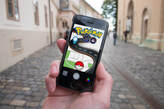 Image by Stux Image by Stux Whenever I’ve been asked what exercise someone should do, my response is always along the lines of: do something you enjoy. You are more likely to stay physically active if you actually like the activity you’re doing. For me, my favourite way to move is walking. I walk a lot. Always have, always will. For the record, though, I also engage in strength training twice a week, various functional fitness workouts weekly, as well as more cardio-focused options like running and bicycling on a regular basis. But walking is still my favourite mode of physical activity. Having said that, even I find walking a challenge in poor weather conditions. Our winters can be long, snowy, cold, icy, and unpredictable. Last year, I purchased a one-month’s pass to an indoor running track towards the end of the winter to keep me moving. This year, I wasn’t feeling the need to run, so I didn’t repeat this purchase. Yet I knew that I needed some added motivation for my walks, which led me to Pokemon Go. First released in 2016, “Pokémon GO is a 2016 augmented reality (AR) mobile game, part of the Pokémon franchise, developed and published by Niantic in collaboration with Nintendo and The Pokémon Company for iOS and Android devices. It uses mobile devices with GPS to locate, capture, train, and battle virtual Pokémon, which appear as if they are in the player's real-world location.” On January 1st, I downloaded the game to my phone and got walking. And let me tell you, it’s been so much fun. And it’s keeping me consistent with my step count year over year. Pokémon GO has helped promote physical activity for people of all ages, including teens who love to play video games. I hope you are able to find a suitable motivation to get moving every day. For now, I will bid you adieu. It’s time for me to go for a walk and catch some Pokémon.
Remember: move more, feel better. Check out the world of Pokémon here.
Exercise is a subset of physical activity that is: planned, structured, repetitive, and for the purpose of conditioning the body. It is safe to say that all exercise is movement, but not all movement is exercise. And that’s okay, because physical activity lies on a continuum, it’s not an all-or-nothing endeavour. I refer to this continuum as NEAT™ to Elite. What’s the alternative to exercise? NEAT™, non-exercise activity thermogenesis, or incidental activity. NEAT is all the ways your body burns energy that is not eating, sleeping, or dedicated exercises. NEAT relates to moving about in daily life. These small, brief muscular movements are just as important as that gym workout in burning calories. You need both exercise and non-exercise activity in your life, but it’s that non-exercise activity that we have lost in our daily lives. That movement has been replaced by appliances and apps—labour-saving devices that have robbed our bodies of the physical activity, or labour, that we used to do on a daily basis before the technological revolution made movement almost obsolete. NEAT™ is different than your workout at the gym because it relates to moving about in daily life. Research suggests that light physical activity like NEAT™ is as beneficial to older adults and previously sedentary individuals as more vigorous exercise is for younger and more physically fit Canadians. Our grandparents’ generation didn’t need fancy gym equipment or flashy workout gear. Their lives required more movement than our current way of living. There were no labour-saving devices like garage door openers, TV remotes, and online shopping. They didn’t outsource physically demanding tasks like housework and snow shovelling. They just moved—a lot. Looking at the other end of the physical activity continuum—i.e., vigorous exercise, or what I refer to as elite—tends to be associated with amateur and professional athletes. Even at the elite level, athletes are paying attention to the continuum of physical activity and adapting their training accordingly. They balance high intensity and lower intensity workouts on a daily basis; their “zero to 60” performance only kicks in at specific times. Only a small fraction of their training and competition time is spent at the high-performance level. Here’s how elite triathlete Patrick Smith explains it: “You have to find a balance. You can train at a nine or 10 but you have to be able to come back the next week, the next month, and stay injury-free.” They pace themselves, and so should you. Our bodies need both exercise and non-exercise activity every single day. Physical activity at any intensity helps prevent and manage chronic health conditions like heart disease, type 2 diabetes, and some forms of cancer. It also improves your mental health, by curtailing symptoms of anxiety and depression, and improving overall well-being. Physical activity that is accumulated in sporadic bouts throughout the day still reduces the risk of early death. Just because you can’t make it to the gym doesn’t mean you can’t be active. Rethink your activities: Go for a walk, play with your kids or grandkids, clean the house, or do some gardening. These are small steps that can lead to big change, because they get your body moving—to be physically active. About Move More, Your Life Depends On It: Need help fitting physical activity into your daily routine? Learn how to embed healthy habits into each day and improve your overall wellbeing. If you like accessible convenience, approachable information, and making a change for the better, then you’ll love this handy guidebook. Order your copy today!  Recently, I’ve noticed a trend in my behaviour: I’ve been focusing on life at home, eschewing my traditional public presence. And I don’t regret it for a moment. You could say I’m embracing JOMO—the joy of missing out. You’ve likely heard about the concept of FOMO— fear of missing out. The idea that you are missing out on fun being had by friends, family, even strangers, weighs heavily for some.
At the other end of the continuum is JOMO—the joy of missing out. Here’s how psychologist Susan Albers describes JOMO: “Think of JOMO as FOMO’s chill distant cousin. It’s the ability to focus on doing what truly makes you happy. That doesn’t mean you sit home alone with no social life. It means you’re selective with what you do without worrying about what others are doing.” I fall firmly in this camp, more so now than ever. I am happier at home, and I do not feel like I’m missing out on anything. And it’s not just because we’re experiencing the darkest days of winter. I am not in hibernation mode. Rather, I’m consciously choosing to eliminate certain activities from my life. This includes the relentless pursuit of relevance on social media and the constant need to create more and more content. I’ve also pulled back on public appearances for the foreseeable future. I am quite happy with doing less in the professional/business realm. You see, I spent many years hustling—both for my own business and as an employee working for others. And I’m tired. I no longer want to be part of hustle culture. A recent book that addresses this topic is You’re Not Lazy: Let Go of What’s Holding You Back So You Can Enjoy a Great Life by Lara Wellman. Lara is a fellow Ottawa entrepreneur and friend. Her book gets to the heart of what I’ve been feeling lately:
So if you’ve been noticing that my accounts have gone quiet, you would be right. And that’s a good thing. 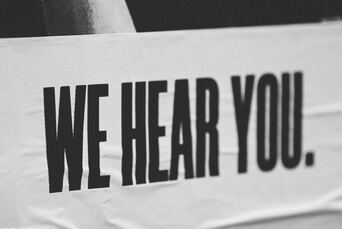 Photo by Jon Tyson on Unsplash Photo by Jon Tyson on Unsplash Amidst the festive lights and celebrations of the holiday season, it's crucial to recognize that not everyone experiences this time of year with joy. For many, the holidays bring added stress, loneliness, and mental health challenges. Recent news stories have shed light on the significance of lending an empathetic ear and providing support, emphasizing the need for global connectivity in times of crisis. In the spirit of the season, let's explore the profound impact of listening and how it can serve as a beacon of hope for individuals facing emergencies, even those who are miles away.
A recent CBC News article brings attention to the introduction of Canada's 988 mental health hotline, a service designed to offer immediate assistance to those in crisis. The hotline provides a listening ear, recognizing the heightened mental health challenges that can accompany the holiday season. The availability of timely and accessible mental health support, especially during the festive period, becomes crucial in ensuring that individuals have a lifeline when they need it the most. Meanwhile, a heartwarming story reported by The New York Times takes us to an African hair salon that has transformed into a sanctuary for mental health discussions. Breaking down the stigma surrounding mental well-being, the salon encourages clients to share their struggles openly while getting their hair done. This innovative approach underscores the importance of creating safe spaces for conversations about mental health, particularly during a time when stress levels tend to soar. In Ottawa, a recent development reported by CTV News introduces a long-overdue upgrade to emergency services. Residents calling 9-1-1 can now have their calls connected to emergency services in other cities, fostering a sense of interconnectedness and expanding the support network for those facing emergencies. These stories collectively convey a powerful message: the impact of offering a listening ear goes beyond borders. During the holiday season, a time often marked by heightened emotions, the simple act of listening can become a beacon of hope for those facing emergencies or struggling with their mental health. As we navigate the holiday rush, let's remember that the gift of listening doesn't know geographical boundaries. It's not about grand gestures or elaborate gifts; it's about dedicating our time, attention, and compassion to those in need. Whether through dedicated hotlines, unconventional spaces like a hair salon, or innovative global approaches to emergency services, the core message remains constant: listening is a force that can bring comfort, understanding, and hope, regardless of where someone may be. This holiday season, let's extend our commitment to being present for others, to lend a compassionate ear not just locally but globally. By doing so, we contribute to a world where human connection knows no borders, making the holidays a time of genuine warmth and support for everyone, regardless of their location. 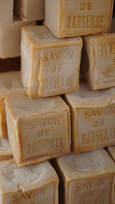 Image source: matthiasboeckel Image source: matthiasboeckel Next month, the French version of Shawna's Outreach will be available for sale. Until then, here's an excerpt from Shawna’s Outreach : En donnant tous un peu, on fait beaucoup. In the English version, you read about Hotel Hank: a bar of soap that was donated to Shawna's Outreach. In the French version, "a day in the life of a donation" is told through the eyes of Yvon le savon. As with its English counterpart, all proceeds from the sale of this book will go directly to helping feed people in need. Le parcours d’un don Faites connaissance avec Yvon d’Hôtel, le petit pain de savon que nous recevons, vous et moi, chaque fois que nous passons une nuit à l’hôtel. Son périple illustre la profonde influence que peut avoir le moindre article sur la vie de quelqu’un. Yvon d’Hôtel se morfond depuis au moins six mois sur les marches d’une maison de banlieue à Ottawa. Ne vous laissez pas tromper par sa modeste apparence : il voit grand. Tout ce qu’il souhaite, c’est de rencontrer l’Eau, son amie, et de contribuer à l’hygiène de quelqu’un. Comme il ne parvient jamais à atteindre une source d’eau, il n’a pas encore accompli sa mission. Du moins, jusqu’à aujourd’hui. 9 h 37 Un ballon de football abandonné dans l’escalier déstabilise Yvon d’Hôtel et l’envoie culbuter jusqu’au bas de l’escalier, où il arrive légèrement amoché. Le coupable de ce rebondissement ramasse Yvon d’Hôtel d’une main, alors que de l’autre, il s’active distraitement sur l’écran de son téléphone. 9 h 38 Le contenu qu’une amie vient d’afficher sur les réseaux sociaux au sujet de Shawna’s Outreach s’affiche à l’écran. Justement, le message donne une liste d’articles de toilette recherchés. 9 h 39 Les yeux alternent d’une main à l’autre, et passent d’Yvon d’Hôtel au billet publié sur Shawna’s Outreach. Une idée vient de surgir, et un plan s’élabore. 9 h 40 Un message arrive directement à Shawna’s Outreach : « Salut, j’ai un savon à donner. Comment dois-je faire? » 10 h 37 Yvon d’Hôtel arrive à un commerce situé à proximité qui sert de point de collecte à Shawna’s Outreach. D’ici quelques heures, Shawna passera prendre le contenu de la boîte de dons. Entre-temps, Yvon d’Hôtel patiente en compagnie des autres articles qui attendent d’arriver à leur destination finale. 12 h 44 Shawna arrive et sort Yvon d’Hôtel de la boîte avec les autres dons. Elle les apporte à l’arrière de son véhicule et commence à les répartir dans des sacs à moitié remplis. Yvon d’Hôtel est placé dans un sac qui contient déjà les articles habituels (boisson, source de protéines, bas, etc.). 15 h Après quelques autres arrêts pour recueillir d’autres dons et les distribuer dans les sacs, Shawna arrive au centre-ville d’Ottawa et commence à les remettre aux personnes sans abri qu’elle rencontre dans la rue. 16 h 12 Un jeune homme assis sur le trottoir reçoit le sac où se trouve Yvon d’Hôtel. Il ouvre rapidement le sac et commence à en explorer le contenu. Lorsqu’il trouve Yvon d’Hôtel, un sourire se dessine sur son visage : il confie à Shawna ne pas avoir pris de douche depuis quatre jours. Il a hâte d’utiliser son nouveau savon, Yvon d’Hôtel. 17 h 13 Yvon d’Hôtel réalise son rêve : il rencontre enfin l’Eau, son amie. La fierté qu’il éprouve à l’idée d’aider ce jeune homme sans abri pétille en lui comme de la mousse de savon. Voilà qui termine bien cette excellente journée. Copyright: Shawna Thibodeau and Amanda Sterczyk 2023, all rights reserved.
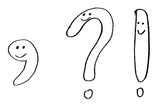 Falls can happen anywhere, anytime, and to anyone. But when an older person falls, the results can be life altering. Did you know that November is Fall Prevention Month in Canada? This annual initiative aims to raise awareness in preventing falls and fall-related injuries. (1) Falls are the leading cause of injury, emergency room visits, and hospitalizations for seniors in North America. The Public Health Agency of Canada has reported sobering statistics in this area:
So, how can older adults fall-proof their lives and their homes? You must realize I’ll be addressing exercise ideas for fall prevention. After all, I’ve published 6 books on the topic! But first, let’s review non-exercise fall prevention tips:
What does posture have to do with fall prevention? Now that we’ve covered this list, let’s focus on your posture. When you sit or stand, are you a comma, a question mark, or an exclamation point? And what, exactly, does posture have to do with fall prevention? Posture is a key component of fall prevention that may not come to mind for you. But don’t worry, you’re not alone—many people are not aware that their posture impacts their ability to prevent a fall. A stooped-over posture has you actively fighting gravity to prevent a momentum-based fall. If your standing position looks more like a question mark than an exclamation point and you trip over your foot or some unseen object, you are more likely to fall as gravity pulls your body forward. If your sitting position looks like a comma, it means your seated posture can still impact your ability to hold yourself in a safer, more upright position when you do get up to walk. In this hunched-over position, your bones are not aligned, and you can’t support your body weight. Instead, your muscles and your connective tissue—the tendons that connect muscles to bones and ligaments that connect bones to each other—have been assigned a role that’s normally reserved for your bones. Eventually, these muscles, tendons, and ligaments declare a strike because they already have a job to do. They don’t want a second job. It’s like asking the widget makers to also make sprockets; they’d rather stick to making widgets and let the sprocket makers make the sprockets. Think of your body as a finely-tuned, highly specialized assembly line. Every part of our body is designed for its specialty. If you don’t use all the parts in the right way, they’ll stop functioning. In the case of movement, if you’re going to keep moving, other parts will have to jump in and help. And that’s when you risk falling. It’s not too late to start. Your body has an incredible feedback loop of action-reaction. If you begin to work your muscles and load your bones, your body will respond. But if you don’t use them, you will lose them. It takes approximately 100 muscles working together to maintain good posture. These muscles need to be strong to hold your body upright. Two exercises that can begin your posture work are active sitting and active standing. Active Sitting Active sitting helps us load our muscles and bones to fight the effects of gravity. Instead of outsourcing the role of our muscles by slumping in our seats, we should sit tall. To start: Begin by sitting in a kitchen or dining room chair that has a firm seat.
Do you need to make it easier? Start with two minutes of active sitting. Are you ready to make it harder? Try for 10 minutes of active sitting every hour. Active Standing Active standing allows us to align our bones while strengthening our muscles and bones in the process. Active standing should feel like work. Your muscles are working together to hold you upright. This is a more effective way to stand, instead of dropping into your heels and hips. Resist the pull of gravity! For this exercise, you can remove your shoes if you’re willing to be bare foot. To start: Stand up.
Are you ready to make it harder? Try for 10 minutes of active standing every hour. Ready for more exercises to work on your posture? All of my books are available for sale on Amazon. Visit my author page to find links to and purchase your copy today: http://amazon.com/author/amandasterczyk. |
Categories
All
Archives
July 2024
AuthorAmanda Sterczyk is an international author, Certified Personal Trainer (ACSM), an Exercise is Medicine Canada (EIMC) Fitness Professional, and a Certified Essentrics® Instructor. |




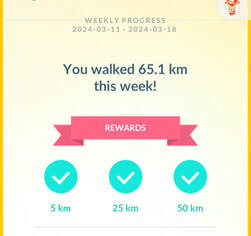

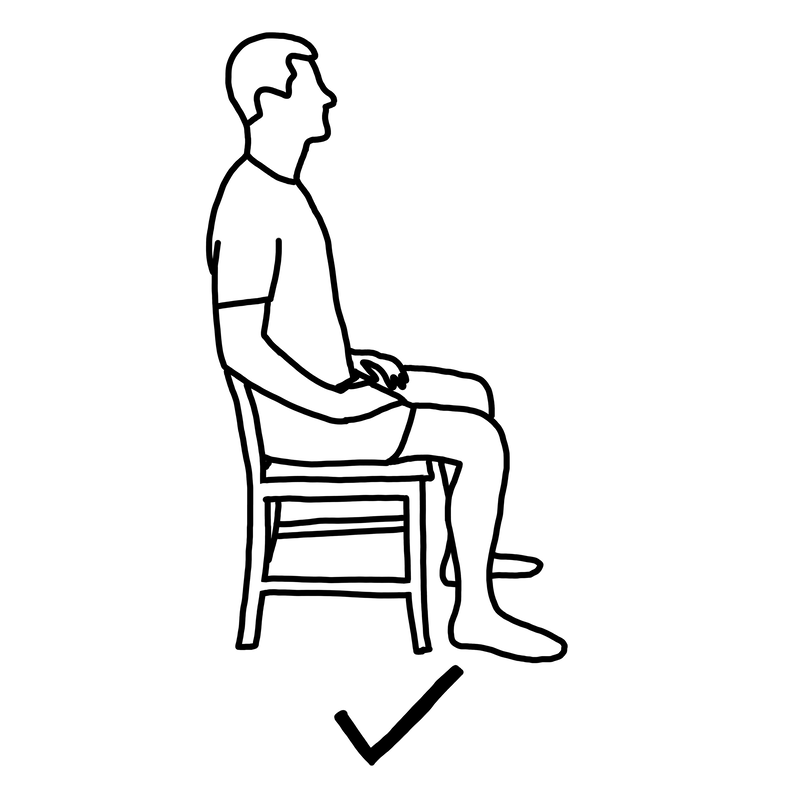
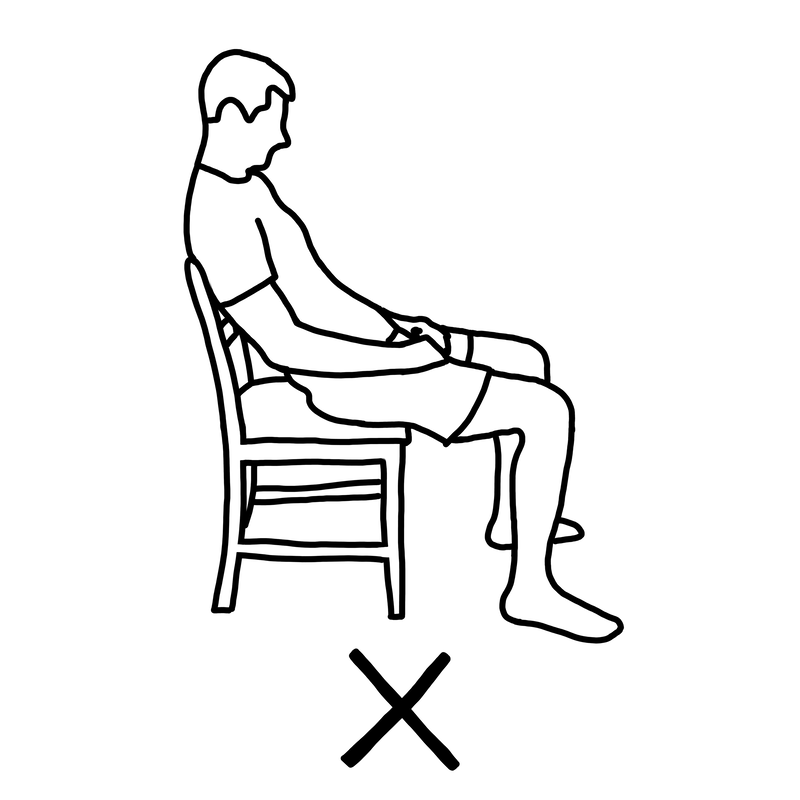
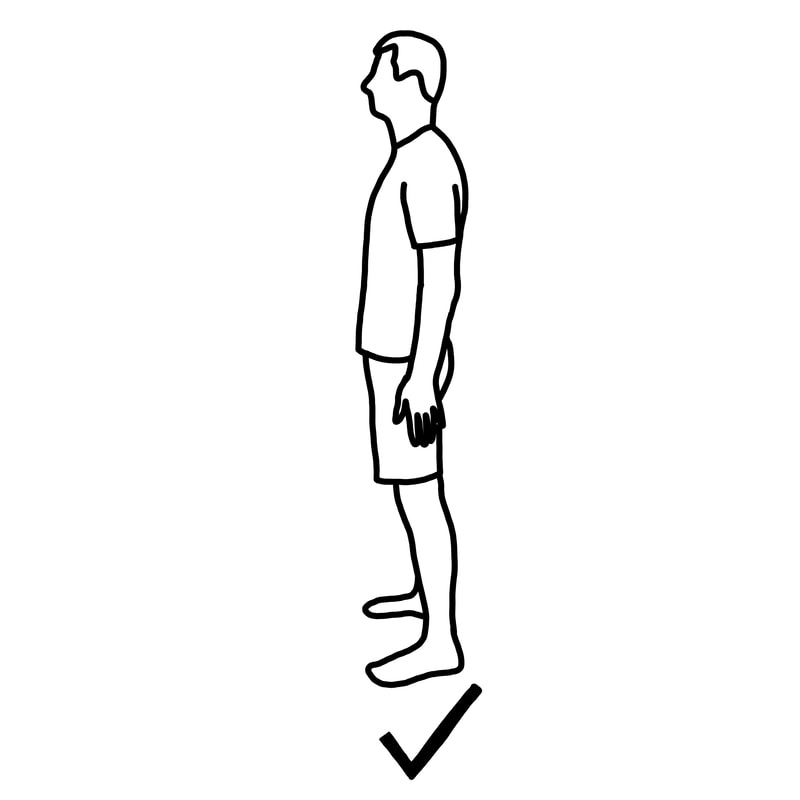
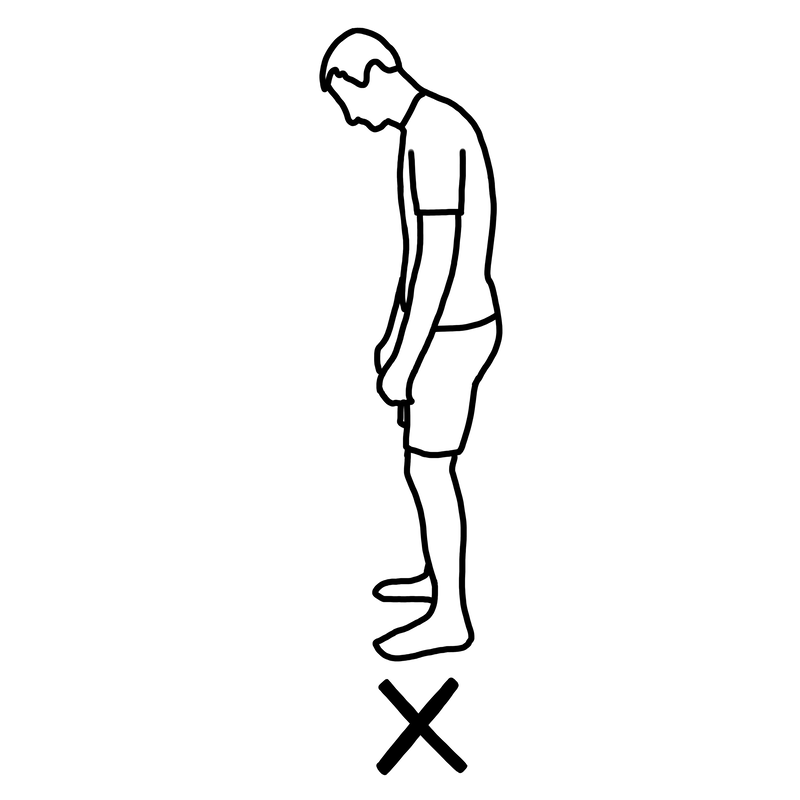
 RSS Feed
RSS Feed